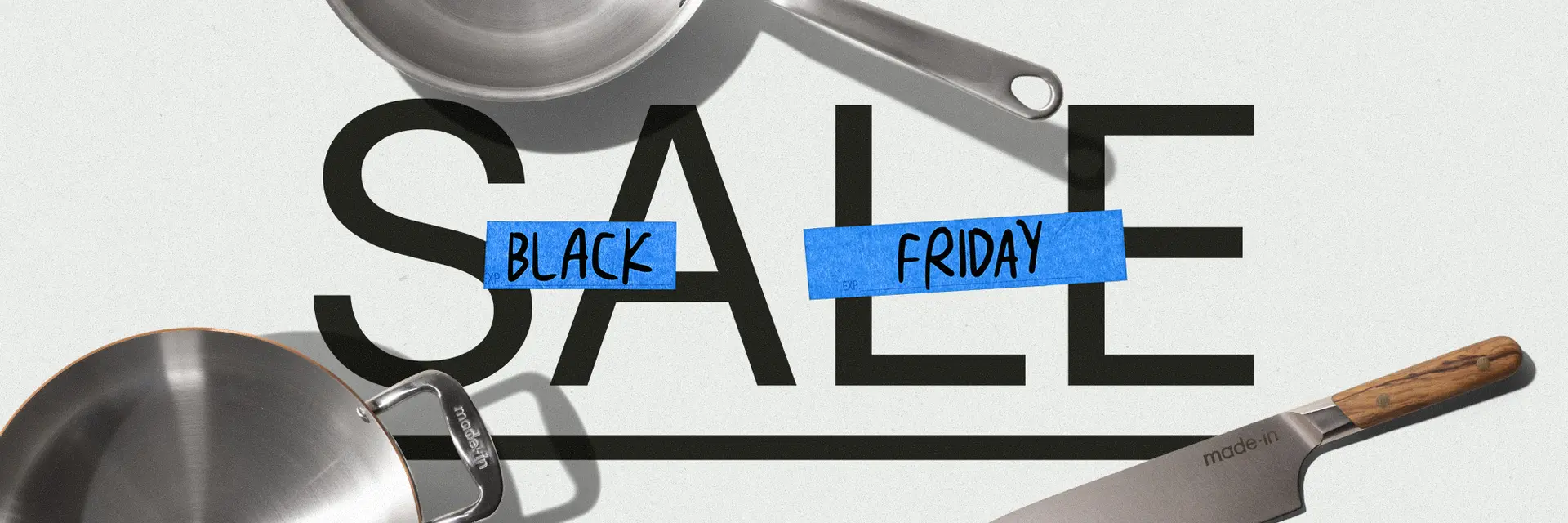Chef Sean Brock, the James Beard Award(s)-winning student of Lowcountry foodways, is known more for humble Appalachian classics like cornbread and hoppin' john. Still, we find ourselves returning again and again to his advice for cooking the perfect steak, which consistently produces tender, juicy cuts with a deep sear and an immaculate heat gradient. Below, get Chef Brock's 6-step plan that's more about understanding your tools than anything else.
1. Choose the Right Pan
While many people prefer Carbon Steel for cooking steak, Chef Sean Brock opts for Stainless Clad for its ability to get hot and retain its heat, ensuring a deep and even sear. It's also non-reactive, allowing you to re-purpose the steak's fond for quick, vibrant pan sauces. Stainless Clad also responds to changes in heat exceptionally well—helpful for controlling temperature and cooking times.
2. Select a Great Steak
Whether you choose a Ribeye, NY Strip, or Hanger steak, purchase a cut with good marbling and from a trusty (ideally local) butcher shop. Solid, even marbling results in tender, juicy steaks.
3. Preheat Your Pan
Get a Stainless Clad Frying Pan ripping hot to get an initial sear on your steak. Medium-high heat is perfect. Season your steak with salt and pepper, then pat it dry to eliminate excess moisture the salt may have brought out. According to Chef Brock, moisture is the enemy of a hard sear, because it turns to steam when it makes contact with the pan.
4. Add Your Fat
To ensure the steak releases easily, Chef Brock adds a tablespoon of vegetable oil. He then waits a minute or two for the oil to heat before adding anything else (this encourages more searing and less sticking).
5. Sear Your Steak
Sear your steak for around 3-4 minutes per side. The timing will vary depending on the thickness of your steak, but it will release from the pan and form a deeply caramelized crust. At this point, Chef Brock says, it's time to add butter and aromatics.
6. Turn the Heat Down
If you were to add butter to the pan right away, it would burn in a matter of seconds. This is especially true when using Stainless Clad. However, if you lower the heat, you'll give the butter time to melt, then brown, then caramelize and absorb the flavor of the herbs and garlic.
To do that, lower your heat from medium-high to medium. Add a few tablespoons of butter, wait for it to melt completely, and add any aromatics. If you're not sure where to start, try bay, garlic, shallots, and dried herbs like thyme. Allow them to infuse the butter before basting.
To baste your steak, tilt your pan slightly towards yourself so that the butter pools on one edge. Use a spoon and follow the curvature of the pan to scoop some of the butter. Drench the steak several times. Not only does this add a new dimension of flavor to your steak, but it also slowly cooks the meat without drying it out.
Ready to Try it for Yourself?
Now that you know the basic technique for cooking a steak like a professional, try this recipe from Chef Tracy Malechek-Ezekiel. A simply dressed flatiron is seared quickly, topped with a wine-infused black pepper cream sauce enriched with fond, and paired with crispy smashed potatoes, once again proving that a reliable Stainless Clad Frying Pan is essential for any cook.
























